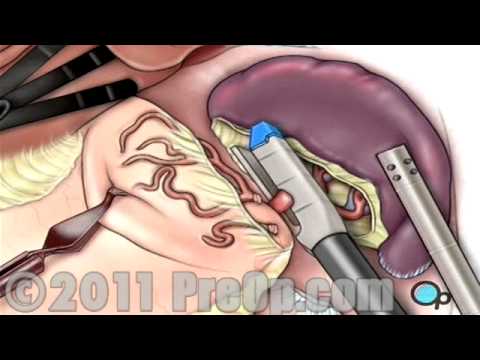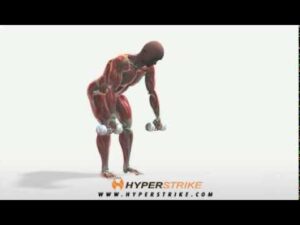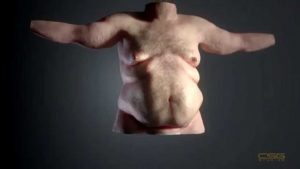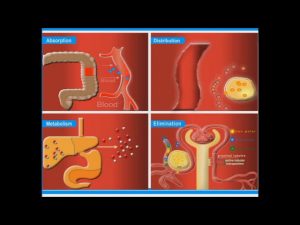http://on.fb.me/PreOp_com – NEW facebook page – it’s cool! Patient Education Company Your doctor has recommended that you undergo a Splenectomy – or spleen removal surgery. But what does that actually mean? The spleen is one of the organs in your body that works to clean your blood. The Spleen is located behind the stomach… and to the left of the liver. Specifically, the spleen picks out and destroys red blood cells that are no longer useful. A Splenectomy is the surgical procedure used to permanently remove the spleen from the body. Patient Education Reasons for removing the spleen vary. Most spleen removal surgery is performed in an emergency situation, during which internal bleeding may be putting a patient’s life at risk. This program assumes, however, that you are not currently in an emergency setting. In your case, the reason for removing the Spleen may be to treat a blood disease, blood congestion, Gaucher’s disease, white blood cell deficiency, the growth of a tumor, or the growth of cysts. Occasionally the Spleen is removed as part of an action taken to determine the best course of treatment for Hodgkin’s disease. Patient Education Company Once in place, the laparoscope will provide video images, that allow the surgeon to carefully cut the ligaments that connect the spleen to the diaphragm as well as the spleen to the colon. Now the doctor can gently pull the liver aside… then pull back the stomach to reveal the spleen. All remaining tissue between the spleen and the stomach including small blood vessels, as well as the spleen and diaphragm are cut. The main vessels that supply blood to the spleen – the splenic artery and the splenic vein are closed off and cut. Finally, the spleen is maneuvered into a special retrieval bag where it is broken into smaller pieces… and removed through one of the laparoscopic working ports. All of the instruments are withdrawn… the carbon dioxide is allowed to escape… and the skin is closed with sutures or staples. Finally, sterile dressings are applied. Patient Education Company Splenectomy surgery only rarely leads to complications. In adults, the liver and other parts of the immune system are susceptible. In children however, the loss of the spleen can weaken the immune system. In either case, your doctor may prescribe a series of antibiotics to help your body’s immune system fight off bacterial infections – such as pneumonia and pancreatitis. Another potential side effect of surgery is a persistent residual neuralgia – or pain – around the scar. It can be either localized or general. It may develop soon after surgery – or even weeks or months later. Usually it will decrease in intensity with time. But in very rare situations it can become permanent. Patient Education More frequently patients report achiness in the shoulders and chest. This is caused by the body’s reaction to the carbon dioxide used to inflate the abdomen and it will clear up in a matter of a few days. The most serious problem would likely be a puncture the bowel or liver. But these are very rare occurrences. Finally, as mentioned earlier, the surgical team may decide to end the laparoscopic procedure and convert to open surgery.

Spleen Removal Surgery Laparoscopic Splenectomy PreOp® Patient Education
- Post author:
- Post published:May 31, 2021
- Post category:Uncategorized
- Post comments:0 Comments
You Might Also Like

What is the difference between Acne and Pimple? – Dr. Sachith Abraham

Lying Triceps Extension-1

Metabolic Rate

Cardio Exercise Video – 4

Fat Loss Foods Video – 1

Anal Abscess – English

Top 10 Foods That Help Lose Belly Fat – Tips To Burn Belly Fat

Exercise Videos- Bent-over Row — Dumbbells

Decline Bench Press-3

How To: Cable Rear Delt Fly Exercise

Why do a lipid profile Test | Suburban Diagnostics

Hydrolysis of fats

Muscle Building Workout & Squats Video – 30

Barbell PREACHER CURL with Fred BIGGIE Smalls! (Pro Series)

Understanding the Skeletal System

45 Hyper Extension Bench

Curcumin Plus Silymarin Could become a Powerful Cancer Fighting Combo

Orthopedic Physiotherapy Video – 7
Yoga, Meditation & Pranayama

Bodybuilding Metabolism

How To: Bands Preacher Curls (Biceps, Arms)

3D fat

ERGOGENIC AIDS

Mary Did You Know? (Official Music Video) | One Voice Children’s Choir cover

Orthopedic Physiotherapy Video – 3

Bodybuilding Nutrition, Diet Recipes & Workout – 3

Semen Analysis – What is the normal sperm count? | Metromale Clinic & Fertility Center

What is a protein?

6 Cable Tricep Exercises For Bigger Arms

Drugs Interaction: Additive, Permissive, Synergistic, Tachyphylactic

Vomiting and Diarrhea

What are Sets & Reps with Clifta- Reno Personal Fitness Trainer

Diet Video – 1

Yoga Guide Video – 5

Hepa Merz L Ornithine; L Aspartate

Understanding T4 to T3 Thyroid Hormone Conversion – KEYE TV Austin – Inspire Wellness Center

Thyroid Hormone Conversion T4 to T3

Leg Curl-5

Top 10 Best Vitamin B-Complex Supplements

Major Pharmacokinetic Processes animation

